#NNPA BlackPress
Mental illness, homelessness major issue in South Los Angeles
NNPA NEWSWIRE — In a study published earlier this year by the American Psychiatry Association, Millennials were found to be the most anxious generation. Women reported higher anxiety than men, and people of color scored 11 points higher on the anxiety scale than Whites.
Distinguishing myths from facts
By Lisa Fitch, Our Weekly News Contributor
During Mental Health Month (May) the 2019 Greater Los Angeles Homeless Count results came in. While both subjects—mental health and homelessness—are becoming increasingly intertwined within the African-American community, the latter report is filled with “June gloom.”
“But not surprising,” said Dr. Erica Holmes, director of the Championship Counseling Center at Faithful Central Bible Church in Inglewood.
“There are a lot of reasons that cause individuals to lose their housing and the city, county and state haven’t done much to reduce those risk factors.”
According to the L.A. Homeless Services Authority (LAHSA), this year’s point-in-time count put the number of homeless people countywide just shy of 59,000. That’s an increase of twelve-percent increase over last year’s count.
“A lot of people think the majority of the homeless population have some severe mental illness, but that’s not true,” said Holmes, a licensed psychologist. “Most of the homeless are women with children.”
According to LAHSA, 38 percent of the homeless are African-American and 30 percent of those counted are female. Twenty-seven percent of the 18-and-over homeless population reportedly have serious mental illnesses.
“Treating mental illness is kind of like with cancer – early detection is best,” Holmes said.
Driving through downtown’s Skid Row, one can see and feel the destitution. Hundreds and hundreds of people are in need of physical and mental services.
But somehow, Ericka Newsome, 39, found an oasis on Skid Row. The Downtown Women’s Shelter is helping her through mental health and housing services.
“I was in foster care a couple of times,” Newsome said. “I’m the second oldest of 12 children.”
Story of Ericka Newsome
After suffering beatings from an abusive mother, Newsome was determined to live on her own. She received prescription drugs for depression and attended Pasadena City College, close to where she was reared.
“The original plan was to transfer to a four-year music school,” Newsome said. “But I had to get a job right away.”
Newsome worked with temporary agencies and landed a job at a local bank. She was even a Rose Parade musician at one time.
“I was being a responsible citizen, paid my bills, following the rules,” Newsome added. “In 2009, a lot of people in the banking industry were cut back. There were no raises, but my rent went up.”
Newsome had to live in her car when she could not afford rent. To avoid parking tickets when she parked on the Pasadena streets, she slept in the bank’s parking structure. She became a member at a local gym, where she could take showers.
“One day after lunch I got a call to go to HR (Human Resources),” Newsome said. “’Hey, ‘you’re no longer part of this company’ they said. I remember walking out and I stood on the edge of the parking structure ready to jump.”
That’s when Newsome checked into the Huntington Hospital – Della Martin Center in Pasadena, where she received a psychological evaluation and hospitalization for depression and anxiety.
But after treatment, she was back sleeping in her car. When she had to sell her automobile to get some money, she was left to walk the streets. She found out about the Downtown Women’s Center while she was staying at a shelter in South Los Angeles.
Downtown Women’s Center
But then one day she was turned away because the shelter was filled to capacity.
“I was really scared and trying to find a place to keep safe,” Newsome said. “The shelter would bus us to this place downtown to shower, get food and clothes.”
Newsome tried to remember the bus route and walked the streets until she finally found the Downtown Women’s Center.
“In the shelter, you had to shower at night,” Newsome remembers. “But at the center you could shower in the morning. I really liked that.” She now attends their group sessions and receives assistance to live in an apartment.
The Downtown Women’s Center has operated for 41 years on Skid Row. They have 119 permanent, supported housing units downtown, as well as other housing units located throughout Los Angeles County.
Some renters pay 30 percent of their income for rent. But a job is not a prerequisite.
“Once a person gets housed, they make sure they are mentally stable there and we’re monitored,” Newsome said. “I don’t want a setback. I need to maintain.”
“I want to give back,” Newsome added, noting that she has joined the Downtown Women’s Center’s advisory board. “I want to pass the word. I was in the same situation. It’s possible.”
Newsome recognizes that there is a cloud surrounding the issue of mental health, especially in the Black community.
“There’s a stigma there,” Newsome said. “But you shouldn’t look down on me because I’m getting help. That doesn’t downgrade my value.”
The African-American community, in particular, has a fear of asking for mental health services, according to Dr. Holmes.
“Research shows that African-Americans tend go to ‘family first,’ then pastor or clergy, and then seek professional psychological services,” Holmes said. “By the time they come into counseling, dealing with psychological distress has become a way of life. Sometimes we have to unpack five, 10, 15 years of depression.”
A stigma in Black families
The center, which has more than a dozen clinicians on staff, conducts a standard intake, which includes a questionnaire asking potential clients about their current situation, why they want therapy, and their previous use of psychotropic medications. They provide services to children as young as four years of age and to seniors. Client fees
are based on their ability to pay.
Word is spreading through social media that mental health is an important part of overall health and is made up of our emotional, psychological and social well-being. It’s a part of life and nothing to be ashamed of.
Millenials embrace therapy
Although seeking out professional help has been a taboo subject for years, Millennials are more likely than previous generations to pursue therapy when they recognize the signs of stress, anxiety, depression and other mood disorders.
A 2015 study conducted by American University revealed that Millennials grew up hearing about mental illnesses—including eating disorders and suicidal tendencies—more than any other age group. This younger society is reportedly more accepting of mental health challenges and is also more likely to talk about mental health issues than their parents or grandparents.
In the American University survey of 900 Millennials, more than 70 percent said they would be comfortable visiting a counselor or therapist.
As more people speak out, the stigma surrounding mental illness is beginning to lessen. Celebrities are openly sharing their mental health struggles in social media, such as former Laker Metta World Peace, who regularly shared his challenges and experiences.
Stigma, distrust and socioeconomic reasons have historically all been factors in Black America’s shunning of professional mental health assistance. The need for these discussions has only increased.
In a study published earlier this year by the American Psychiatric Association, Millennials were found to be the most anxious generation. Women reported higher anxiety than men, and people of color scored 11 points higher on the anxiety scale than Whites.
Research suggests that African-Americans are 20 percent more likely to experience a mental health disorder as opposed to the general population, but many factors may inhibit proper treatment. Only 25 percent of Blacks seek professional help, compared to 40 percent of Whites with mental health disorders.
Daily stress can be an enemy of your mental health. It causes a chemical reaction that occurs when the body goes into “fight-or-flight” mode. Your heart rate increases and blood pressure rises.
Know the signs and potential triggers of mental illness and if you’re ever concerned about how you feel, consult a doctor:
- Insomnia
- Low energy
- Negative outlook or thoughts
- Pulling away from people or usual activities
- Lack of affection
- Mood disorder
- Anxiety attacks
- Poor judgment
- Upset stomach
- Racing thoughts
- Chest pains
Mental health experts agree that when a person is experiencing excessive stress and it is interfering with daily activities, seeking help is key. In addition to discussing the situation with a professional, reach out to friends; look for local support; and find
therapeutic resources.
Some stress tools worth trying include, acupuncture; aromatherapy; art therapy; deep breathing; exercise; healthy eating; massage therapy; stretching; and yoga.
Your mental health affects your physical health. Don’t ignore the signs.
#NNPA BlackPress
Beloved Actor and Activist Louis Cameron Gossett Jr. Dies at 87
NNPA NEWSWIRE — Louis Gossett Jr., the groundbreaking actor whose career spanned over five decades and who became the first Black actor to win an Academy Award as Best Supporting Actor for his memorable role in “An Officer and a Gentleman,” has died. Gossett, who was born on May 27, 1936, in Brooklyn, N.Y., was 87. Recognized early on for his resilience and nearly unmatched determination, Gossett arrived in Los Angeles in 1967 after a stint on Broadway.
The post Beloved Actor and Activist Louis Cameron Gossett Jr. Dies at 87 first appeared on BlackPressUSA.
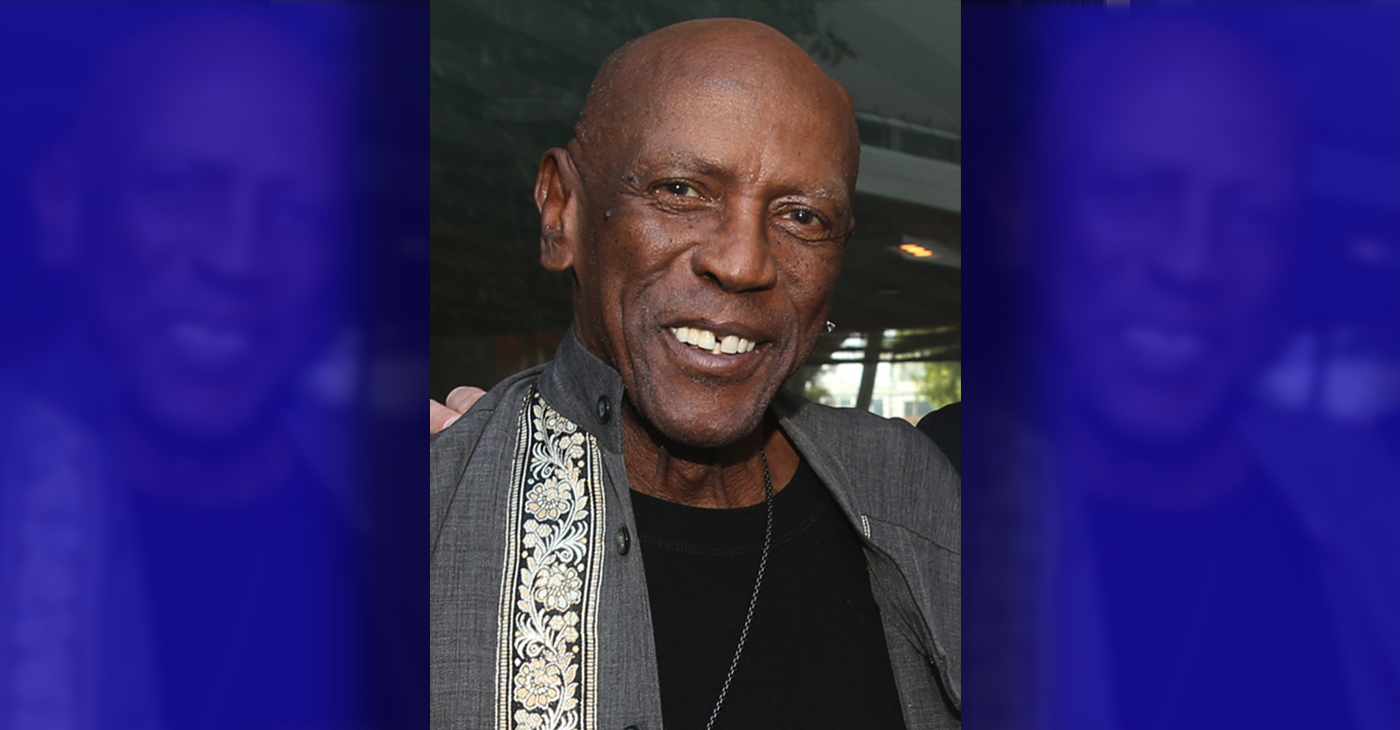
By Stacy M. Brown
NNPA Newswire Senior National Correspondent
@StacyBrownMedia
Louis Gossett Jr., the groundbreaking actor whose career spanned over five decades and who became the first Black actor to win an Academy Award as Best Supporting Actor for his memorable role in “An Officer and a Gentleman,” has died. Gossett, who was born on May 27, 1936, in Brooklyn, N.Y., was 87. Recognized early on for his resilience and nearly unmatched determination, Gossett arrived in Los Angeles in 1967 after a stint on Broadway.
He sometimes spoke of being pulled over by law enforcement en route to Beverly Hills, once being handcuffed to a tree, which he remembered as a jarring introduction to the racial tensions of Hollywood. In his memoir “An Actor and a Gentleman,” Gossett recounted the ordeal, noting the challenges faced by Black artists in the industry. Despite the hurdles, Gossett’s talent shone brightly, earning him acclaim in groundbreaking productions such as “A Raisin in the Sun” alongside Sidney Poitier. His Emmy-winning portrayal of Fiddler in “Roots” solidified his status as a trailblazer, navigating a landscape fraught with racial prejudice.
According to the HistoryMakers, which interviewed him in 2005, Gossett’s journey into the limelight began during his formative years at PS 135 and Mark Twain Junior High School, where he demonstrated early leadership as the student body president. His passion for the arts blossomed when he starred in a “You Can’t Take It With You” production at Abraham Lincoln High School, catching the attention of talent scouts who propelled him onto Broadway’s stage in “Take A Giant Step.” His stellar performance earned him the prestigious Donaldson Award for Best Newcomer to Theatre in 1952. Though initially drawn to sports, Gossett’s towering 6’4” frame and athletic prowess led him to receive a basketball scholarship at New York University. Despite being drafted by the New York Knicks in 1958, Gossett pursued his love for acting, honing his craft at The Actors Studio under the tutelage of luminaries like John Sticks and Peggy Fury.
In 1961, Gossett’s talent caught the eye of Broadway directors, leading to roles in acclaimed productions such as “Raisin in the Sun” and “The Blacks,” alongside legends like James Earl Jones, Cicely Tyson, Roscoe Lee Brown, and Maya Angelou. Transitioning seamlessly to television, Gossett graced small screens with appearances in notable shows like “The Bush Baby” and “Companions in Nightmare.” Gossett’s silver screen breakthrough came with his role in “The Landlord,” paving the way for a prolific filmography that spanned over 50 movies and hundreds of television shows. From “Skin Game” to “Lackawanna Blues,” Gossett captivated audiences with his commanding presence and versatile performances.
However, his portrayal of “Fiddler” in Alex Haley’s groundbreaking miniseries “Roots” earned Gossett critical acclaim, including an Emmy Award. The HistoryMakers noted that his golden touch extended to the big screen, where his role as Sergeant Emil Foley in “An Officer and a Gentleman” earned him an Academy Award for Best Supporting Actor, making him a trailblazer in Hollywood history.
Beyond the glitz and glamour of Hollywood, Gossett was deeply committed to community activism. In 1964, he co-founded a theater group for troubled youth alongside James Earl Jones and Paul Sorvino, setting the stage for his lifelong dedication to mentoring and inspiring the next generation. Gossett’s tireless advocacy for racial equality culminated in the establishment of Eracism, a nonprofit organization dedicated to combating racism both domestically and abroad. Throughout his illustrious career, Gossett remained a beacon of strength and resilience, using his platform to uplift marginalized voices and champion social change. Gossett is survived by his children, Satie and Sharron.
The post Beloved Actor and Activist Louis Cameron Gossett Jr. Dies at 87 first appeared on BlackPressUSA.
#NNPA BlackPress
COMMENTARY: D.C. Crime Bill Fails to Address Root Causes of Violence and Incarceration
WASHINGTON INFORMER — The D.C. crime bill and so many others like it are reminiscent of the ‘94 crime bill, which produced new and harsher criminal sentences, helped deploy thousands of police and surveilling methods in Black and brown communities, and incentivized more states to build prisons through a massive infusion of federal funding. While it is not at the root of mass incarceration, it significantly accelerated it, forcing a generation of Black and brown families into a never-ending cycle of state-sanctioned violence and incarceration.
The post COMMENTARY: D.C. Crime Bill Fails to Address Root Causes of Violence and Incarceration first appeared on BlackPressUSA.
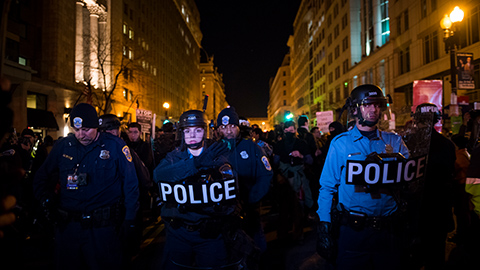
By Kaili Moss and Jillian Burford | Washington Informer
Mayor Bowser has signed the “Secure DC” omnibus bill passed by the D.C. Council last month. But we already know that this bill will be disastrous for all of D.C., especially for Black and brown residents.
While proponents claim that this legislation “will make D.C. residents safer and more secure,” it actually does nothing to address the root of the harm in the first place and instead maintains a cycle of violence, poverty, and broken community ties. The omnibus bill calls for increased surveillance, drug-free zones, and will expand pre-trial detention that will incarcerate people at a significantly higher rate and for an indeterminate amount of time before they are even tried. This bill will roll back decades of nationwide policy reform efforts and initiatives to keep our communities safe and whole, which is completely contradictory to what the “Secure” D.C. bill claims it will do.
What is unfolding in Washington, D.C., is part of a dangerous national trend. We have seen a resurrection of bad crime bills in several jurisdictions across the country — a phenomenon policy experts have named “zombie laws,” which are ineffective, costly, dangerous for communities of color and, most importantly, will not create public safety. Throwing more money into policing while failing to fund preventative measures does not keep us safe.
The D.C. crime bill and so many others like it are reminiscent of the ‘94 crime bill, which produced new and harsher criminal sentences, helped deploy thousands of police and surveilling methods in Black and brown communities, and incentivized more states to build prisons through a massive infusion of federal funding. While it is not at the root of mass incarceration, it significantly accelerated it, forcing a generation of Black and brown families into a never-ending cycle of state-sanctioned violence and incarceration. Thirty years later, despite spending billions each year to enforce these policies with many of these provisions remaining in effect, it has done very little to create long-term preventative solutions. Instead, it placed a permanent moving target on the backs of Black people, and the D.C. crime bill will do the same.
The bill calls for more pretrial detention. When our loved ones are held on pretrial detention, they are held on the presumption of guilt for an indeterminate amount of time before ever seeing a judge, which can destabilize people and their families. According to experts at the Malcolm Weimer Center for Social Policy at Harvard University, just one day in jail can have “devastating consequences.” On any given day, approximately 750,000 people are held in jails across the nation — a number that beats our nation’s capital population by about 100,000. Once detained, people run the risk of losing wages, jobs, housing, mental and health treatments, and time with their families. Studies show that pretrial detention of even a couple of days makes it more likely for that person to be rearrested.
The bill also endangers people by continuing a misguided and dangerous War on Drugs, which will not get drugs off the street, nor will it deter drug use and subsequent substance use disorders (SUDs). Drug policies are a matter of public health and should be treated as such. Many states such as Alabama, Iowa and Wisconsin are treating the current fentanyl crisis as “Crack 2.0,” reintroducing a litany of failed policies that have sent millions to jails and prisons instead of prioritizing harm reduction. Instead, we propose a simple solution: listen to members of the affected communities. Through the Decrim Poverty D.C. Coalition, community members, policy experts and other stakeholders formed a campaign to decriminalize drugs and propose comprehensive legislation to do so.
While there are many concerning provisions within the omnibus bill, car chases pose a direct physical threat to our community members. In July 2023, NBC4 reported that the D.C. Council approved emergency legislation that gave MPD officers the ability to engage in vehicular pursuits with so-called “limited circumstances.” Sgt. Val Barnes, the head of MPD’s carjacking task force, even expressed concern months before the decision, saying, “The department has a pretty strict no-chase policy, and obviously for an urban setting and a major metropolitan city, that’s understandable.” If our law enforcement officers themselves are operating with more concern than our elected officials, what does it say about the omnibus bill’s purported intention to keep us safe?
And what does it mean when the risk of bodily harm is posed by the pursuit itself? On Saturday, Feb. 10, an Eckington resident had a near-miss as a stolen car barreled towards her and her dog on the sidewalk with an MPD officer in pursuit. What responsibility does the city hold if this bystander was hit? What does restitution look like? Why are our elected officials pushing for MPD officers to contradict their own policies?
Just a few summers ago during the uprisings of 2020, we saw a shift in public perspectives on policing and led to legislation aimed at limiting police power after the highly-publicized murders of loved ones Breonna Taylor and George Floyd — both victims of War on Drugs policing and the powers gained from the ’94 crime bill. And yet here we are. These measures do not keep us safe and further endanger the health of our communities. Studies show that communities that focus on harm reduction and improving material conditions have a greater impact on public safety and community health. What’s missing in mainstream conversations about violent crime is the violence that stems from state institutions and structures that perpetuate racial and class inequality. The people of D.C. deserve to feel safe, and that includes feeling safe from the harms enacted by the police.
Kaili Moss is a staff attorney at Advancement Project, a national racial justice and legal organization, and Jillian Burford is a policy organizer at Harriet’s Wildest Dreams.
The post COMMENTARY: D.C. Crime Bill Fails to Address Root Causes of Violence and Incarceration first appeared on BlackPressUSA.
#NNPA BlackPress
Mayor, City Council President React to May 31 Closing of Birmingham-Southern College
THE BIRMINGHAM TIMES — “This is a tragic day for the college, our students, our employees, and our alumni, and an outcome so many have worked tirelessly to prevent,” Rev. Keith Thompson, chairman of the BSC Board of Trustees said in an announcement to alumni. “We understand the devastating impact this has on each of you, and we will now direct our efforts toward ensuring the smoothest possible transition for everyone involved.”
The post Mayor, City Council President React to May 31 Closing of Birmingham-Southern College first appeared on BlackPressUSA.

By Barnett Wright | The Birmingham Times
Birmingham-Southern College will close on May 31, after more than a century as one of the city’s most respected institutions.
“This is a tragic day for the college, our students, our employees, and our alumni, and an outcome so many have worked tirelessly to prevent,” Rev. Keith Thompson, chairman of the BSC Board of Trustees said in an announcement to alumni. “We understand the devastating impact this has on each of you, and we will now direct our efforts toward ensuring the smoothest possible transition for everyone involved.”
There are approximately 700 students enrolled at BSC this semester.
“Word of the decision to close Birmingham Southern College is disappointing and heartbreaking to all of us who recognize it as a stalwart of our community,” Birmingham Mayor Randall Woodfin said in a statement. “I’ve stood alongside members of our City Council to protect this institution and its proud legacy of shaping leaders. It’s frustrating that those values were not shared by lawmakers in Montgomery.”
Birmingham City Council President Darrell O’Quinn said news of the closing was “devastating” on multiple levels.
“This is devastating for the students, faculty members, families and everyone affiliated with this historic institution of higher learning,” he said. “It’s also profoundly distressing for the surrounding community, who will now be living in close proximity to an empty college campus. As we’ve seen with other institutions that have shuttered their doors, we will be entering a difficult chapter following this unfortunate development … We’re approaching this with resilience and a sense of hope that something positive can eventually come from this troubling chapter.”
The school first started as the merger of Southern University and Birmingham College in 1918.
The announcement comes over a year after BSC officials admitted the institution was $38 million in debt. Looking to the Alabama Legislature for help, BSC did not receive any assistance.
This past legislative session, Sen. Jabo Waggoner sponsored a bill to extend a loan to BSC. However, the bill subsequently died on the floor.
Notable BSC alumni include former New York Times editor-in-chief Howell Raines, former U.S. Sen. Howell Heflin and former Alabama Supreme Court Chief Justice Perry O. Hooper Sr.
This story will be updated.
The post Mayor, City Council President React to May 31 Closing of Birmingham-Southern College first appeared on BlackPressUSA.
-
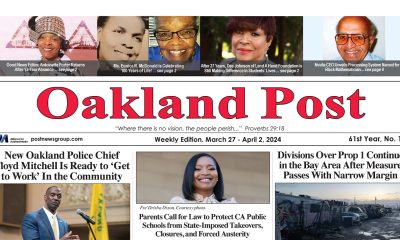
 Activism4 weeks ago
Activism4 weeks agoOakland Post: Week of March 27 – April 2, 2024
-
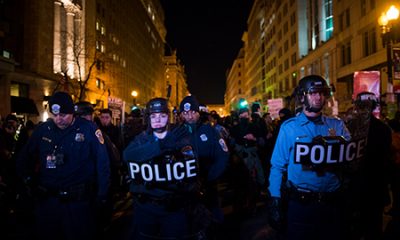
 #NNPA BlackPress4 weeks ago
#NNPA BlackPress4 weeks agoCOMMENTARY: D.C. Crime Bill Fails to Address Root Causes of Violence and Incarceration
-

 #NNPA BlackPress4 weeks ago
#NNPA BlackPress4 weeks agoFrom Raids to Revelations: The Dark Turn in Sean ‘Diddy’ Combs’ Saga
-

 #NNPA BlackPress4 weeks ago
#NNPA BlackPress4 weeks agoMayor, City Council President React to May 31 Closing of Birmingham-Southern College
-

 #NNPA BlackPress4 weeks ago
#NNPA BlackPress4 weeks agoBaltimore’s Key Bridge Struck by Ship, Collapses into Water
-

 #NNPA BlackPress4 weeks ago
#NNPA BlackPress4 weeks agoBeloved Actor and Activist Louis Cameron Gossett Jr. Dies at 87
-
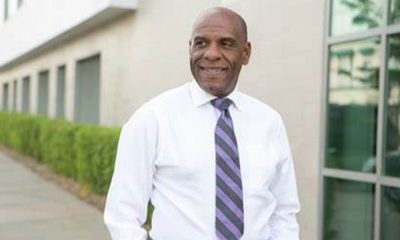
 Community1 week ago
Community1 week agoFinancial Assistance Bill for Descendants of Enslaved Persons to Help Them Purchase, Own, or Maintain a Home
-

 Activism3 weeks ago
Activism3 weeks agoOakland Post: Week of April 3 – 6, 2024

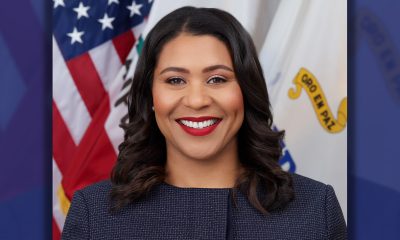

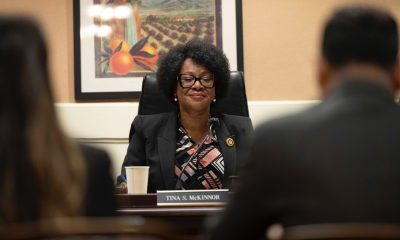

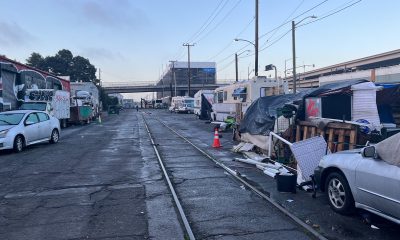



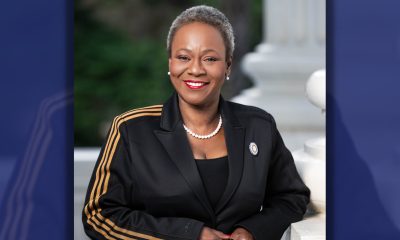




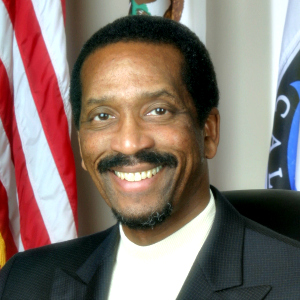







































1 Comment